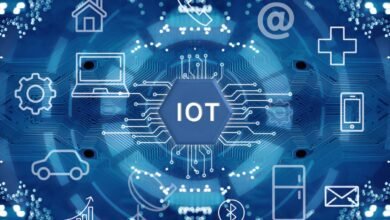The Ethics of IoT Surveillance: Balancing Innovation and Rights
IoT surveillance refers to the use of connected devices to monitor, record, or analyze user behavior and environmental conditions.

The rise of the Internet of Things (IoT) has transformed modern life in unimaginable ways. From smart thermostats and wearable devices to connected cars and security cameras, IoT devices offer convenience, efficiency, and real-time insights. However, this unprecedented connectivity brings with it critical ethical dilemmas, especially when it comes to surveillance and personal privacy. As these technologies become more ingrained in everyday life, society faces a complex challenge: how to balance innovation with individual rights.
In this article, we delve deep into the ethics of IoT surveillance, exploring the implications for users, corporations, and governments alike. We aim to highlight the need for clear guidelines, regulations, and transparent practices that protect the rights of individuals while encouraging technological progress.
Understanding IoT Surveillance
IoT surveillance refers to the use of connected devices to monitor, record, or analyze user behavior and environmental conditions. These devices often collect personal data such as location, voice recordings, biometric identifiers, and even daily habits. The goal is often to improve user experience, optimize systems, or provide services more efficiently.
However, the pervasive data collection can easily lead to unauthorized surveillance, data breaches, or the misuse of sensitive information. This raises questions about informed consent, data ownership, and the limits of monitoring in both public and private spaces.
The Innovation Argument
Proponents of IoT emphasize the immense benefits the technology offers. Smart homes increase energy efficiency, wearable health devices help in early diagnosis and health monitoring, and smart cities improve traffic flow and resource management. From a business perspective, the data generated by IoT devices provides actionable insights that can lead to product improvements, customer personalization, and predictive analytics.
The innovation IoT enables is undeniable. It drives economic growth, creates new markets, and enhances quality of life. Yet, the ethical challenge lies in ensuring that this innovation does not come at the cost of human dignity and autonomy.
Ethical Challenges of IoT Surveillance
1. Informed Consent
One of the most pressing ethical issues is informed consent. Many IoT devices collect data passively, often without the explicit knowledge or agreement of the user. For example, a smart TV may record voice commands to improve functionality, but in doing so, it may also capture private conversations.
Informed consent requires that users are fully aware of what data is being collected, how it will be used, and who will have access to it. The reality, however, is that privacy policies are often lengthy, complex, and filled with legal jargon, making them difficult for the average user to understand.
2. Data Ownership and Control
Another ethical dilemma revolves around data ownership. When a user interacts with an IoT device, who owns the generated data? Is it the user, the manufacturer, or a third-party service provider? This question is particularly crucial in health-related IoT applications where sensitive medical data is involved.
Users should have the right to access, modify, and delete their data. Ethical practices dictate that companies must provide users with control over their personal information, including the option to opt out of certain types of data collection without losing access to core functionalities.
3. Surveillance Creep
The concept of surveillance creep refers to the gradual expansion of surveillance beyond its original purpose. For instance, a security camera installed for theft prevention could later be used to monitor employee productivity or customer behavior, raising serious ethical and legal questions.
Such expansion often occurs without public debate or clear justification. Over time, this normalization of surveillance can lead to a society where constant monitoring becomes accepted, potentially threatening civil liberties and the right to private life.
4. Bias and Discrimination
IoT systems, particularly those powered by artificial intelligence (AI), are susceptible to bias. Surveillance systems that use facial recognition, for example, have shown higher error rates for women and people of color. This not only undermines the technology’s effectiveness but also perpetuates social injustices.
Ethical implementation of IoT surveillance requires rigorous testing, diverse datasets, and ongoing audits to minimize bias. Moreover, there should be mechanisms for accountability and redress when discrimination occurs.
5. Security Risks
The more connected our devices become, the larger the attack surface for cybercriminals. IoT devices often have weak security protocols, making them attractive targets for hacking, identity theft, and data manipulation.
From an ethical standpoint, manufacturers have a responsibility to embed robust cybersecurity measures into their products. Likewise, governments must enact and enforce regulations that hold companies accountable for data protection.
Government Surveillance and IoT
Governments around the world are increasingly turning to IoT for public safety, crime prevention, and national security. Smart surveillance systems in public places, such as CCTV networks with facial recognition, are becoming more common. While these technologies can aid in law enforcement, they also present a risk of authoritarian overreach.
The use of IoT in public surveillance must be guided by clear legal frameworks, judicial oversight, and democratic accountability. Otherwise, there’s a danger of sliding into a surveillance state, where citizens are constantly watched and evaluated without consent or recourse.
Corporate Responsibility in IoT Surveillance
Corporations that develop and deploy IoT technologies bear a significant ethical burden. They must go beyond legal compliance and adopt privacy-by-design principles, which integrate data protection into the architecture of the system from the outset.
Transparent data practices, clear communication, and ethical leadership are essential. Companies should also establish internal ethics committees, conduct impact assessments, and collaborate with regulatory bodies to ensure responsible innovation.
Global Regulatory Landscape
The regulatory environment for IoT surveillance varies significantly across regions. The European Union’s General Data Protection Regulation (GDPR) is widely regarded as a gold standard, emphasizing user consent, data minimization, and the right to erasure. In contrast, the United States has a more fragmented approach, with different states implementing varying levels of protection.
Emerging economies often lack comprehensive data protection laws, creating a regulatory vacuum where exploitation and abuse are more likely. A global ethical framework for IoT surveillance is necessary to ensure uniform standards and cross-border cooperation.
Ethical Design and Best Practices
A shift towards ethical design in IoT development is critical. This involves integrating human values into every stage of the design process, from ideation to deployment. Key principles include
-
Transparency: Inform users about what data is being collected and how it will be used.
-
User Empowerment: Give users control over their data and settings.
-
Security by Design: Embed cybersecurity features into the device from the ground up.
-
Minimal Data Collection: Only collect what is necessary for functionality.
-
Accountability: Create systems to monitor, audit, and correct unethical use.
By adhering to these principles, developers and businesses can create IoT systems that are both innovative and respectful of human rights.
Public Awareness and Digital Literacy
One often overlooked aspect of the ethics of IoT surveillance is the role of public education. Users need to be aware of how these technologies work, what risks they pose, and how to protect themselves. Increasing digital literacy can empower individuals to make informed decisions, recognize unethical practices, and advocate for better policies.
Educational campaigns, community workshops, and user-friendly documentation can bridge the gap between technological advancement and public understanding. A well-informed public is a crucial line of defense against unethical surveillance.
Balancing Innovation and Rights: A Path Forward
Balancing the benefits of IoT with the protection of individual rights is not a zero-sum game. With thoughtful design, strong regulation, and ethical governance, it is possible to harness the power of connected technologies while preserving freedom, privacy, and human dignity.
Policymakers, technologists, and civil society must work together to establish ethical norms and legal safeguards. This collaboration should focus on
-
Developing international standards for ethical IoT deployment
-
Encouraging corporate transparency and accountability
-
Enhancing user education and rights awareness
-
Promoting open dialogue on surveillance technologies
Conclusion
The ethics of IoT surveillance is one of the defining challenges of our time. As we navigate a world increasingly shaped by smart devices, it is imperative that we remain vigilant about how these technologies are used and regulated.
Innovation should not come at the expense of privacy, equity, or freedom. By embedding ethical principles into the very fabric of IoT systems, we can create a future that is both technologically advanced and morally sound.
The path ahead demands responsible innovation, proactive regulation, and a commitment to human rights. Only then can we truly balance the transformative power of IoT with the fundamental values of a free and just society.











